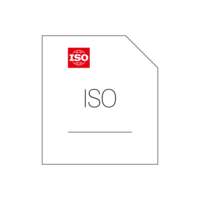

ISO/TS 10303-1612:2006
Ausgabedatum: 2006 12 13
Industrial automation systems and integration — Product data representation and exchange — Part 1612: Application module: AP210 device functional and physical characterization
ISO/TS 10303-1612:2006 specifies the application module for AP210 device functional and physical characterization.
ISO/TS 10303-1612:2006 deals with the representation of device functional and physical characterization. Device data includes the following information:
- device black box model,
- package data,
- functional data,
- environmental constraints,
- performance data,
- simulation models.
Formal encapsulation of external data type definitions is made for parametric data and analysis models. Pin mapping is provided to ensure consistency between device views. Shape, material, technology, tolerance on shape and on parameters, units are included. Shapes included may be categorized according to discipline (e.g. thermal analysis, vibration analysis) and analysis environment (e.g. design, assembly, end-user). Geometric dimensioning and tolerancing is included. The functional data includes two distinct data sets:
- hierarchical functional decomposition into behavioural elements embedded in a network represented at each level by a nodal formulation, and
- pin mapping of the terminals of the top level functional definition to the physical terminals of the device.
Configuration management information and design change management information is provided. This data includes at least one geometric representation.
The following are within the scope of ISO/TS 10303-1612:2006:
- black box models;
- pin mapping between functional and physical view;
- mapping to simulation model;
- classification of shape purposes for black box models;
- nodal based behavioural representation.
